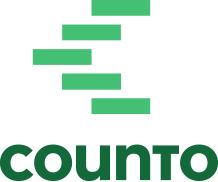How to Maximize the Enterprise Innovation Scheme in Singapore
In Singapore’s fast-moving business environment, innovation is no longer optional — it’s a strategic advantage. And with the Enterprise Innovation Scheme (EIS), the government is giving small businesses real financial incentives to invest in that advantage.
If you’re looking to build smarter systems, adopt new technology, or improve operations, this scheme could significantly reduce your corporate tax burden or offer immediate cash support. But like any tax incentive, the benefits depend on how well you understand the rules and structure your claims.
Here’s what you need to know — and how to make the most of it.
What Is the Enterprise Innovation Scheme?
The Enterprise Innovation Scheme is a tax initiative by the Inland Revenue Authority of Singapore (IRAS) designed to support businesses that invest in innovation, R&D, and capability development.
Running from YA 2024 to YA 2028, the scheme allows eligible businesses to claim up to 400% tax deductions or opt for a 20% cash payout (up to $100,000 per YA) on qualifying expenses.
This scheme is especially beneficial for small and medium-sized enterprises (SMEs) investing in systems, training, or innovation projects without massive in-house R&D departments.
Who’s Eligible?
You’re eligible if your business is:
- Tax resident in Singapore
- Incurring costs on approved innovation-related activities
- Maintaining proper records and documentation to support claims
There are no minimum income or staff requirements, making the scheme highly accessible to startups and smaller operations.
✅ One fixed price. All your financials are handled. Combine accounting and tax filing in a single plan. See how simple it can be here.
What Expenses Qualify?
To claim under EIS, your expenses must fall into one of the five approved innovation categories:
- Research & Development (R&D):
In-house or outsourced R&D efforts aimed at developing new products, processes, or technologies.
- Intellectual Property (IP) Registration:
Legal costs and fees for filing patents, trademarks, or designs in Singapore or overseas.
- IP Acquisition and Licensing:
Purchasing or licensing intellectual property that enables business innovation.
- Innovation Projects with IHLs / RIs:
Collaborations with local Institutes of Higher Learning or public research institutions.
- Training in Innovation and Technology:
Staff training programs in tech adoption, digital systems, or process improvement — provided they are accredited.
Tax Deduction or Cash Payout: Which Should You Choose?
- If your business is profitable, the enhanced tax deduction reduces your taxable income and overall tax payable.
- If you’re not yet profitable, the cash payout option gives you liquidity now — especially useful for early-stage businesses.
You can’t claim both for the same expense, so choose based on your current tax position and cash flow needs.
How to Maximize the EIS Without Stress
- Plan Ahead:
Treat innovation activities like a core part of your business planning — not an afterthought.
- Track Every Expense:
Maintain clear documentation, vendor contracts, invoices, and proof of execution.
- Use Recognised Providers:
For training and partnerships, make sure the institutions or platforms are approved by IRAS.
- Work Cross-Functionally:
Coordinate between your operations, HR, and finance teams so eligible projects aren’t overlooked.
- File Accurately and On Time:
Claims must be submitted with your tax return and follow IRAS documentation requirements. Errors or omissions can delay or void your benefits.
What’s New in 2025?
As of YA 2025, the EIS continues to offer:
- Up to 400% tax deduction on qualifying expenditures
- 20% cash conversion capped at $100,000 per YA
- Expanded recognition of partnerships and tech adoption activities, with clearer filing guidance for SMEs
This makes 2025 an ideal year to tap into the scheme — especially if you’re upgrading processes, digitising operations, or launching new product development.
Summary
The Enterprise Innovation Scheme is more than a tax break — it’s a smart financial lever for growing businesses in Singapore. If you’re already investing in tech, training, or process improvement, there’s no reason to leave this support on the table.
With good planning, clear documentation, and timely filing, EIS can be a powerful tool to boost your bottom line — while building long-term competitiveness.
Streamline Your Finances with Smart Technology
Running a business is complex enough. That’s why we offer combined accounting and tax filing plans at one fixed price. Our AI handles your daily books while tax experts manage your filing obligations. Plus, your dedicated CSM is just a SMS away. Chat with us now, email [email protected], or use our contact form.
Here are some articles you might find helpful:
How to Brand Your Business on Social Media
Know Your Market: How to Analyse Competitors Before You Launch
Preparing for Singapore’s Mandatory E-Invoicing in 2025: A Practical Guide for SMEs







